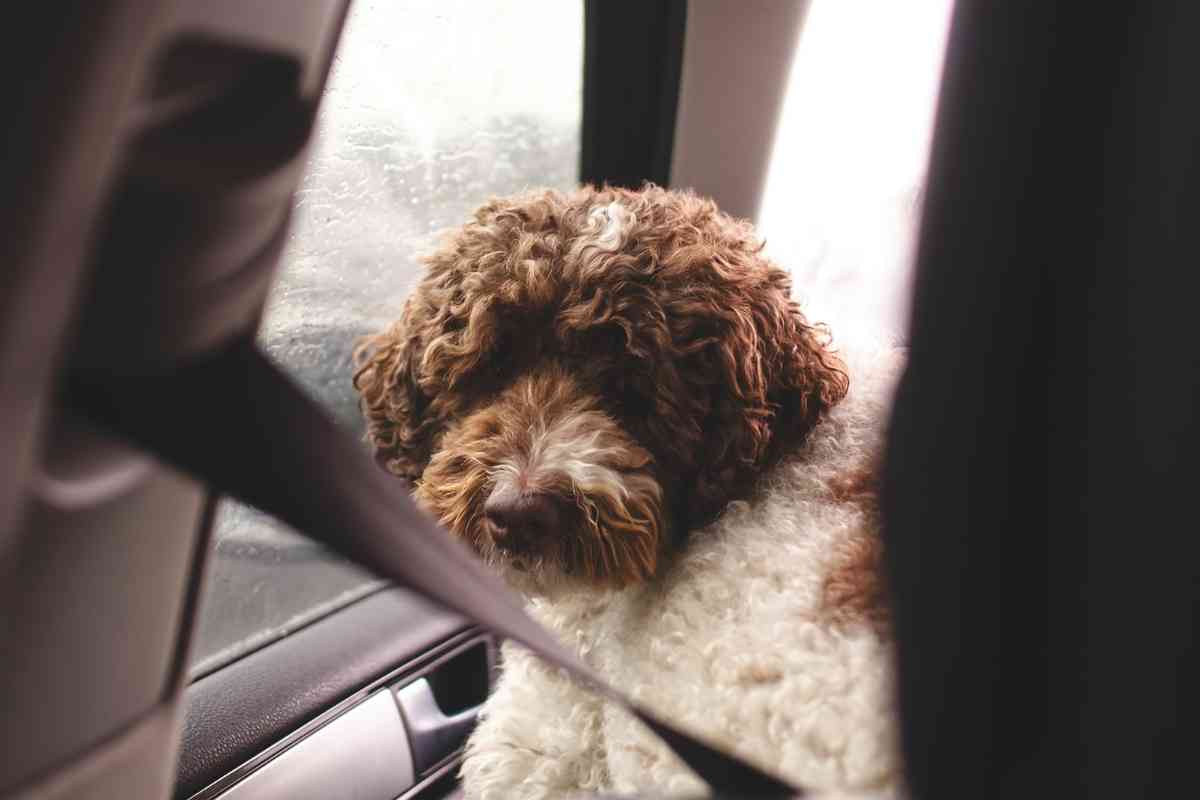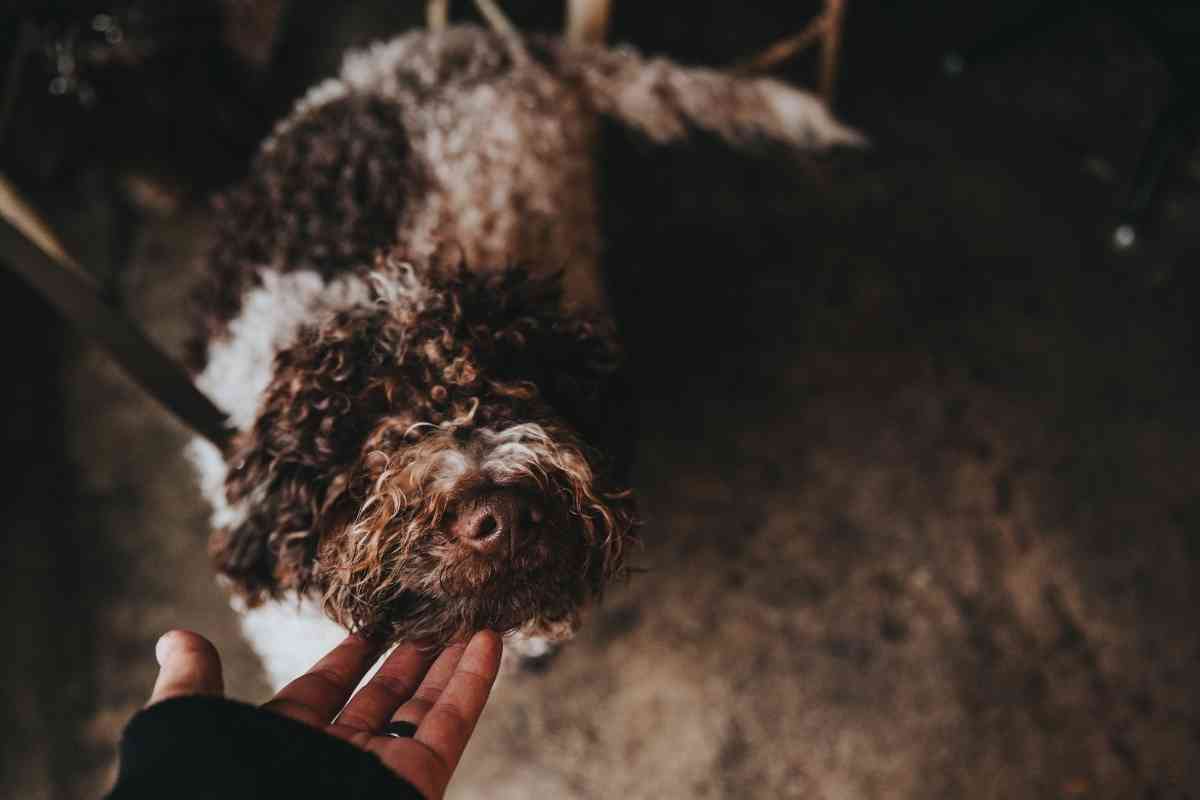Parti Goldendoodles: What Are They and Should You Get One?
The Parti Goldendoodle, a Golden Retriever and Poodle crossbreed, stands out among the many possible coat patterns for these Doodles.
While the Parti Goldendoodles are rare breeds, their popularity has continued to skyrocket as more and more people want to learn more about them and eventually add them to their families. So, what is a Parti Goldendoodle?

What’s a Parti Goldendoodle?
A Parti Goldendoodle is a crossbreed of Golden Retriever and Poodle with a striking two-color coat variety. Their colored coat is 50% white and 50% any solid color from the recessive genes. You should get a Parti Goldendoodles because they are calm, easy to feed and easy to train.
Unlike other dog breeds, a Parti Goldendoodle cannot be bred by mating two dogs. To successfully produce Parti Goldendoodles, breeders must first understand the color genes of the Goldendoodle, which explains why they are a rare breed.
Understanding a Parti Goldendoodle is daunting, but this guide explains everything you need to know about this dog, like a teddy bear, as recommended by a veterinarian.
What Exactly Is a Parti Goldendoodle?
A Parti Goldendoodle, a crossbreed of Golden Retriever and Poodle with a distinct two-color coat variation, is among the rarest breeds of Goldendoodles. The Parti Goldendoodle’s colored coat is composed of fifty percent white and fifty percent any solid color resulting from the recessive genes.
Breeding the Parti Goldendoodle is more difficult than breeding typical Goldendoodles. Infact, you cannot come across two Parti Goldendoodles that look similar. Parti Goldendoodles are uncommon and valuable, with their price point being on the more expensive side.
Unlike other dog breeds, you cannot create a Parti Goldendoodle by simply mating any dogs. The coat pattern of this canine involves breeding multiple generations of the parent breeds to develop. To successfully breed Parti Goldendoodles, breeders must first have proper knowledge of the Goldendoodle’s color genes.
The names of the possible pattern combinations on a Parti Goldendoodle change according to the proportion of white to other solid colors. Mismark, Parti-factored, chrome, and abstract are names that can be used to describe a Parti Goldendoodle.
All You Need To Know About the Parti Goldendoodle
Parti Goldendoodles have been a fan favorite since the inception of this hybrid breed. Despite being an uncommon breed, many individuals will travel great distances to acquire one.
Here is all you may need to know about the Parti Goldendoodle before taking the plunge.

Variations in Color
Like other purebred and mixed breed canines, Parti Goldendoodle puppies change color as they mature. Their coats get lighter with time.
However, the change in color does not indicate a complete transition but rather a progressive shift in hue.
Height and Weight
Pati Goldendoodles come in three types, with each being significantly different from the other:
Miniature Parti Goldendoodles
Once mini Partis realize full maturity at 11 to 13 months, they average around 13 and 17 inches shoulder length and 15 to 35 pounds.
Medium Parti Goldendoodles
On the other hand, Medium Partis average 17 to 20 inches in height and 35 to 50 pounds in weight at full maturity. Medium Parti Goldendoodles achieve maturity at the same age as miniature Parti Goldendoodles.
Standard Parti Goldendoodle
Standard Goldendoodles are the largest type of Parti Goldendoodle. They can reach heights between 20 and 26 inches and often weigh between 50 and 90 pounds. They reach full maturity between 13 and 16 months of age.
Remember that even after achieving full maturity, Parti Goldendoodles can still put on weight, much of which is determined by their lifestyle and diet.
Type of Coat
There are three primary coat types to choose from:
Straight Coats
These Parti Goldendoodles have a coat similar to a Golden Retriever’s; however, they tend to shed more fur than the Golden.
Curly Coat
These Parti Goldendoodles have a comparable appearance to a teddy bear or a poodle.
Shaggy Coat
These are the most prevalent coat styles, combining the best qualities of both parents.
Life Expectancy
When correctly produced, Parti Goldendoodles are usually a healthy dog breed with a typical lifespan of 10 to 15 years.
Health Concerns
Parti Goldendoodles are healthy, specifically when bred by a responsible breeder. However, these canines may be genetically susceptible to specific health problems prevalent in Goldendoodles. These diseases include:
Hip Dysplasia
Hip dysplasia, a prominent health condition in Goldendoodles, is the most common health concern that Parti Goldendoodles may encounter. Hip dysplasia is a developmental condition that affects growing dogs.
It relaxes the hip joint, leading to discomfort and dysfunction. As the canine matures, the bone and cartilage in their hip deteriorate. This eventually results in muscle atrophy, arthritis, and diminished mobility.
Elbow Dysplasia
Common among Parti Goldendoodles, elbow dysplasia affects improperly developed elbow joints. The genetic, developmental disorder elbow dysplasia affects young dogs of large breeds. Some canines develop a step in the C-shape between the ulna and radius bones, probably because the radius bone is not the same length as the ulna.
Von Willebrand disease
Von Willebrand Disease is a clotting disorder that causes profuse bleeding in Parti Goldendoodles. This disease results from a decrease in the quantity or activity of von Willebrand factor, a blood protein that helps platelets adhere to wounded surfaces and form clots.
Cataracts
A cataract is a cloud that blocks light from entering the eye. The cloudy appearance of cataracts on the lenses of a dog’s eyes makes them easier to spot. In the worst case, a Goldendoodle with a cataract will have compromised or no eyesight.
Patellar Luxation
Patellar luxation is the dislocation or displacement of the kneecap from its normal position. This disease can cause significant pain in dogs.
It is a debilitating health issue that must be treated to alleviate the dog’s pain and suffering.
Ear Infections
One of the most vital things to keep your Parti Goldendoodle healthy is to keep an eye out for ear infections. Part Goldendoodles acquire the Golden Retriever’s dangling ears from their parent breeds, which can sometimes lead to ear infections after being bathed or drenched.
It would help keep your Parti Goldendoodles ears clean and dry as a responsible owner. At least once every week, examine their ears for signs of infection, such as redness or stench.
You can use a clean cotton pad and ear cleaning fluid to clean infection-causing debris from the ear canal. However, avoid sticking anything into the dog’s ear canal since doing so could cause discomfort and injury.
Maintenance Requirements
Parti Goldendoodles are easily the easiest canines to take care of.
Exercise
A Parti Goldendoodle requires a minimum of 30 minutes of daily exercise. However, this is dependent on their age, size, and energy level. For a young Parti, excessive activity can be detrimental to their health.
On the other hand, adult dogs should engage in daily activity to build their muscles, maintain a healthy weight, and prevent boredom. However, care must be taken not to exceed the workouts, as this could cause discomfort and pain.
Adult dogs that are properly trained can be left to stay outside playing alone.
Grooming
The Parti Goldendoodle is a dog breed with medium requirements and excellent environmental adaptability. Unless they have a health problem or are shedding their puppy fur, they can be hypoallergenic, low-shedding dogs. Therefore, they are an excellent option for allergy patients.
Because their coats may demand time and care, some individuals may continue to view them as high maintenance, which is far from the truth. Frequent grooming makes these creatures easier to keep.
Bathing
One bath a week is essential to make their coats easier to manage when brushing. However, avoid over-bathing them, as the natural oils in their fur may be removed.
Brushing their Coats
Cutting their Nails
The Parti Goldendoodle’s nails must be clipped at least once a month to prevent injury to anyone around the Parti.
Should You Acquire a Parti Goldendoodle?
Absolutely! Parti Goldendoodles are among the greatest family pets. They were bred precisely to be the ideal dog for your household. They are gregarious, clever, and affectionate dogs. Parti Goldendoodles are bred to delight and adore their families.
The best addition to make to your household is to get a Parti Goldendoodle as of yesterday.
Here is why:
Reasons Why You Should Get A Parti Goldendoodle
They Do Not Bark Frequently
In general, Parti Goldendoodles do not bark excessively, which is one of the reasons so many people choose to add them to their households. They, too, enjoy some peace.
In addition, their quiet disposition makes them perfect inside dogs. However, their quietness differs based on the situation and the dog in question.
Ability to Interact with Children
They appreciate the company and care of their owners, making them great buddies for families with young children. Parti Goldendoodles are exceedingly family-oriented and protective.
They are friendly and calm around children, making them the ideal family dog. Yet, they must be trained to deal with young children, as their weight can accidentally throw a toddler off balance. While they can be highly active at times, you may need to constantly be on the Parti’s radar if they are playing with a children.
Playful
Parti Goldendoodles exhibit comparable characteristics to their parent breeds in that they are active, playful, and love running. Due to their athleticism, running is second nature to them.
Their playful disposition makes them the perfect playmates for playing catch, football, or swimming. They are pretty good swimmers.
Due to their constant high energy levels, Parti Goldendoodles can be quite hyper. Their parents, the Golden Retriever and the Poodle are both energetic dogs, which may justify why their puppies are hyperactive.
Also, for this reason, they are occasionally used in sports pursuits such as hunting.
Friendly to Strangers
They possess the quality of being friendly and accommodating to strangers. However, while being kind to a stranger is a good thing, it sometimes becomes a downside since their gregarious nature makes them inefficient guard dogs.
Easy to Train
As with all Goldendoodle hybrids, Parti Goldendoodles are exceptionally intelligent, having inherited their intelligence from their parents. Due to their natural intelligence, even inexperienced pet owners can easily train them.
These dogs are intelligent creatures who are always desperate to impress their owners and trainers and are happy to carry out any task they ask.
In addition to obedience training, agility training is equally paramount. These classes can assist them in expending excess energy, bonding with other active dogs, and strengthening their bond with their owners.
Easy to Feed
The Parti Goldendoodle is not difficult to nourish since they do not need a strict diet. While the canine might not be on a diet, you should not compromise on food quality.
Parti Goldendoodles should be fed a high-protein diet to aid muscle development and a diet rich in healthy fats to provide them with the energy they require. They can also be fed a large number of carbs.
Choosing the proper dog food is crucial, especially if you want to guarantee that your pet receives all their nutrients at each meal. You may need to incorporate your vet’s opinion when coming up with their meal combos.
Multivitamins are encouraged to complement a balanced diet and stave off severe diseases. For instance, Vitamins A, C, and E are taken to prevent eczema, cataracts, and elbow dysplasia. Additionally, you can give your furry best friend fish oils since they contain omega fatty acids, which are beneficial to their health
Easily Builds Bonds with Other Dogs
Mainly if they have grown up with other pets and dogs, Parti Goldendoodles deeply love them. They tend to take care of and protect their dog friends. Typically, they are not aggressive with other dogs.
Even still, same-sex animosity is anticipated because it is natural for canines to demonstrate dominance over other canines of the same sex.